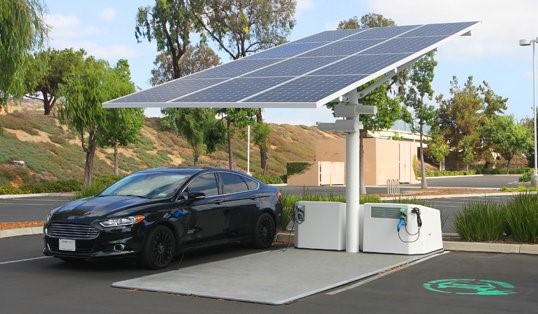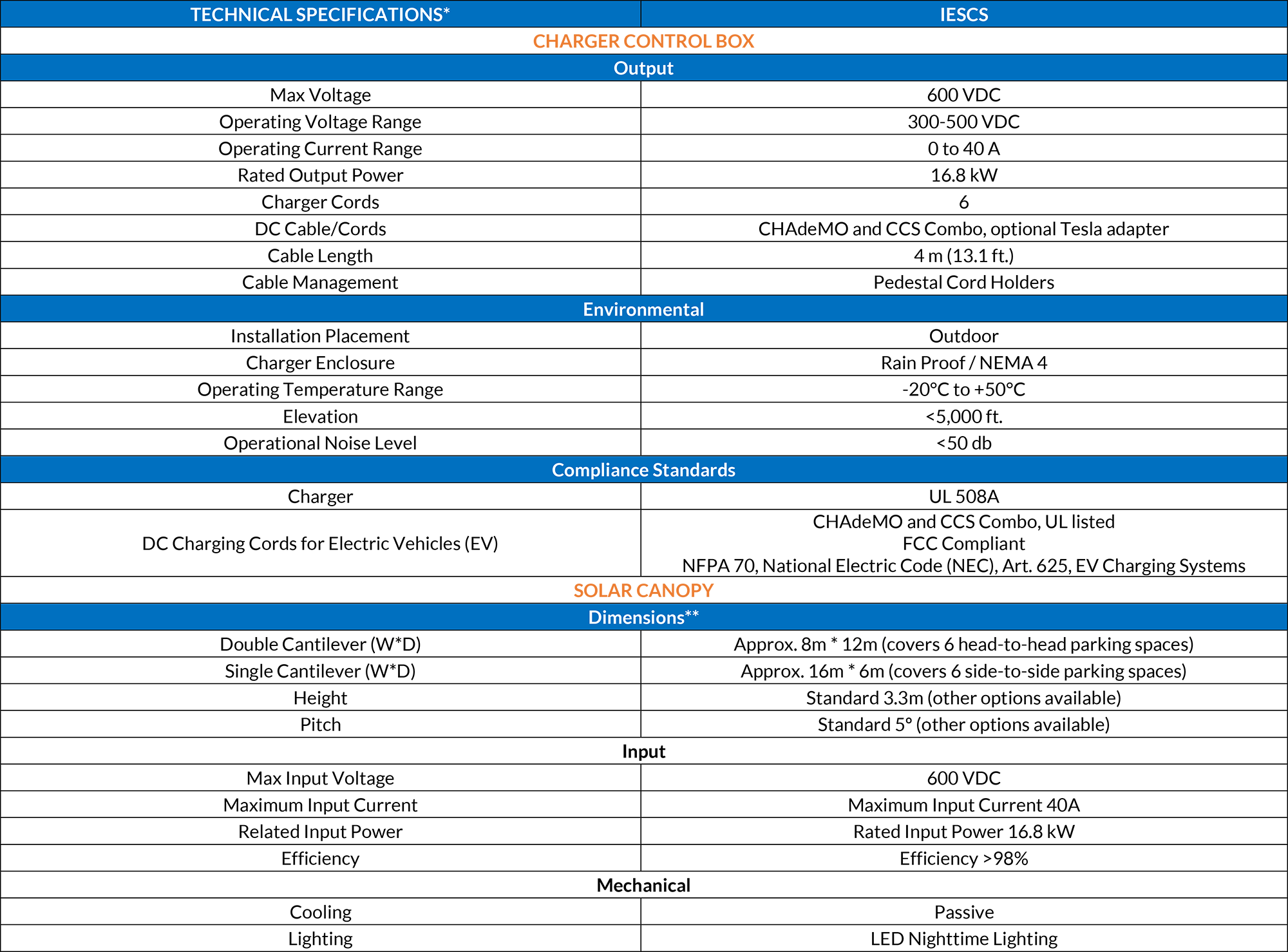Solar Charging Stations
Introduction
The combination of a solar panel system and EV charging station brings several benefits and provides a cost-effective way to produce and make use of your solar energy. If you are trying to set up a solar panel system that can provide enough energy to fuel your electric car, you will need this type of setup.
Components of EV Charging stations
- Solar PV Panels : A photovoltaic (PV) panel harnesses the solar radiation into electrical energy to be supplied to the electric vehicle batteries. In fast EV charging stations, large array (~300) of electrically connected solar panels would be installed to generate the required power to charge electric cars in a day. The angle of solar panel is one of the crucial factors in deciding the output efficiency of these panels. The other factors being the latitude, longitude and weather conditions. The solar panels are attached to moveable, motor-controlled solar trackers. Based on the inputs from the microcontrollers, these motor-run trackers move the solar panels axis to receive maximum sunlight any given time in a day.
- Microcontrollers : The microcontrollers used in a typical solar PV charging system have the responsibility of :
- Ensuring maximum efficiency of solar power generation through the MPPT controllers.
- Storing the extra energy generated from the solar PV panels into storage battery cells which.
Additionally, the microcontrollers are programmed to control the motor using a Pulse Width Modulation (PWM) technique to align the panels for maximum power generation.
- Motor to control Solar Panel Axis Rotation : A bi-directional motor is used to control the solar trackers so that the panels are tilted at an angle where they receive the maximum sunlight at any given time in a day. The real-time information about maximum solar radiation is obtained through the Solar Position Algorithm. The Solar Position Algorithm calculates the sun’s position based on the azimuthal and elevation values, based on the time, date and location of Earth. This information is used by the central microcontrollers to control the motors to rotate the panels at specific angles at which they would receive the max. Solar radiation.
- DC-DC converter with MPPT : An electronic DC-DC converter helps in converting the high power generated from solar panels to required EV battery voltage. These DC-DC converters use Maximum Power Point Tracking (MPPT) to support the PV panels to operate at the maximum power. Maximum Power from solar radiations is inherently non-uniform in nature and varies with temperature and time in a particular day. The DC-DC converter offers an interfacing between the photovoltaic panel and the load to achieve maximum power transfer without loss. The MPPT controller is connected to the output of the solar PV panel. In a typical photovoltaic generating systems such as the solar EV charging system, The MPPT controller takes in higher voltage DC output from panels, and evaluates the best possible value of power from the panel to charge the battery and converts the power into optimized voltage levels to get maximum Ampere values.
- Communication Interface between the EV battery systems and charging system : The battery monitoring system (BMS) of the electrical vehicle should communicate with the solar powered charging system to ensure an optimal charging without fail. Most often the charging devices communicate with the BMS of the electric vehicle either via a CAN BUS or Power Line communication.During this handshaking, following information is exchanged between the two systems:
- Maximum capacity of the vehicle battery
- Rate at which current is transferred
- Temperature and other parameters related to the EV batteries
- Interface : Most EV charging stations come with a Human-machine Interface to display various parameters including solar energy capture, the energy consumed by the EV battery while it is being charged. The number of display options on the HMI may vary with the manufacturer, to enhance the user experience.
- EV Battery charging equipment : The Society of Automotive Engineers (SAE) specifies 3 levels of charging standards for electric vehicle charging equipment: Level 1, Level2 & Level 3- where the ‘levels’ indicate the charging power.
- Level I Charging :A level 1 charging equipment uses standard household power outlet with 120 V circuit. Fully charging an EV using an L1 Charger can take 8 to 12 hours or even more, depending on the EV battery type. A Level 1 charging is best done at home overnight, when the vehicle usage is the least.
- Level II Charging :A level II charging describes a 240 volt AC charging and is commonly used for daily commute. An LII Charger can fully charge an EV in 4 -6 hours, depending on the EV battery type. The LII charging equipment can be found in public spaces, residential settings, and commercial areas to facilitate easy EV charging.
- Level III- DC Fast Charging :A level III charging equipment charges an EV through a high-voltage DC chargers (480 V plug) and supports charging up to 500 volts. In a fast charging mode, an L3 charger can supply an EV with 80% of charge in just twenty to thirty minutes.
Key Benefits of Using a Solar PV Panel as an Energy Source for EVs
At this stage, we are witnessing the onset of widespread installations of Solar Powered Charging Stations across various cities of the world. Reasons for this growth in numbers are many. Let us look at some of the tangible benefits :
- About 80% of a solar panel module can be recycled using advanced end-of-life recycling techniques. The end products of this recycling can be used for more productive processes. The International Renewable Energy Agency (IRENA) has observed that various materials recovered from solar panel recycling could be $450 million by the end of 2030.
- The average lifespan of a solar panel manufactured today, is more than the 20 years. Contrary to the conventional batteries and inverters that need a replacement every 5-20 years of installation.
- Improvement in technology is enabling solar energy to chart new records in terms of power generation and capacity.
- Solar Energy is one of the cleanest options for fueling the electric cars.
- Solar panels installed at homes can help significantly in saving electricity costs through a controlled charging schedule.
- Prices of solar installations have reduced considerable over time, encouraging more people to invest in one of the most popular forms of renewable energy.

Specification for solar EV charging station
